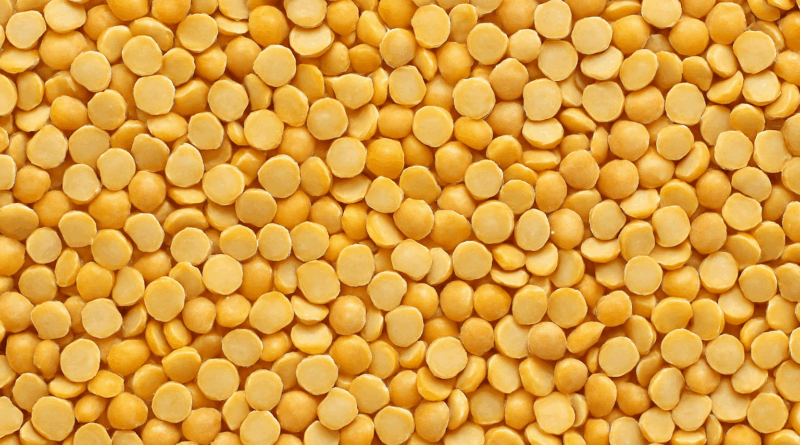360 Grams Of Protein For $6?
Last Updated on: 7th August 2025, 10:56 am
The other day at a discount grocery store there was a sale on Royal Split Pigeon Peas, which some people say is a type of lentil if you have never eaten them. Each bag was marked down from $4 for two pounds to $3 so I got 2 bags for $6. Each bag has 180 grams of protein according to the nutritional panel on the back. That’s 360 grams of protein for $6.
Any ideas how much ribeye steak has 360 grams of protein? According to FoodData Central, 3.5 ounces of ribeye steak has 18.7 grams of protein. To get to 360, that portion amount needs to be multiplied by about 19.25 because 19.25 x 18.7 is 360. Multiplying 19.25 x the portion size of 3.5 equals a little over 4 pounds. The Google AI overview says the price of ribeye steak per pound is $12–$20. Slightly over 4 pounds of ribeye steak at $12 per pound would cost about $50. At $20 per pound it would cost over $80. So, at $12 per pound the ribeye steak costs $44 more than the split pigeon peas and at $20 per pound it costs $74 more.
There are some people who believe that eating dead animal parts is necessary for human nutrition because plant foods don’t have complete protein. That view is actually a myth; there are many plant foods that have all 9 essential amino acids, including split pigeon peas. Don’t get me wrong, the point is not that anyone would try to live only on split pigeon peas; they can be combined with lentils, beans, grains, vegetables, seeds, and nuts. They can also be eaten with bread.
The split pigeon peas, aka toor dal, contain fiber, which is an essential nutrition for human health. The ribeye steak has none.
How important is fiber for human health? This is what the American Heart Association wrote. “Fiber has been shown to help protect against heart disease, diabetes, diverticulitis, inflammatory bowel syndrome, obesity and colorectal cancer. Fiber can help flush toxins from the body, lower cholesterol and promote weight loss because it helps people feel fuller while consuming fewer calories.”
One of the reasons to write this article is that there is a persistent myth that plant foods cost too much. The claim is false and silly. Another is recalling a video the distance athlete, author, vegan, and social media influencer Rich Roll made some years ago. In it, he went grocery shopping and purchased literally bags of food for about $30. He got much more plant food for the cost than he would have been able to purchase had he shopped for parts of dead animals.
Yet another reason is the research and writing I have done recently about high-carbon foods and low-carbon foods. Beef is the highest carbon food, or one of them, as are dairy products. They are really bad for climate change and they are obviously terrible for the animals. Plant foods are some of the lowest-carbon options.
In the case of toor dal (split pigeon peas), it also costs ridiculously less than beef and it’s a healthier choice. The split pigeon peas have plenty of protein for the Americans who seemed to be crazed about protein to the point they overlook other important nutrients.
Sign up for CleanTechnica's Weekly Substack for Zach and Scott's in-depth analyses and high level summaries, sign up for our daily newsletter, and follow us on Google News!
Sign up for our daily newsletter for 15 new cleantech stories a day. Or sign up for our weekly one on top stories of the week if daily is too frequent.
CleanTechnica uses affiliate links. See our policy here.
CleanTechnica's Comment Policy
